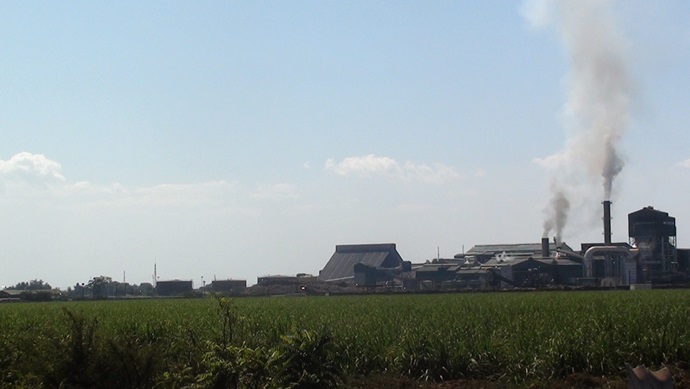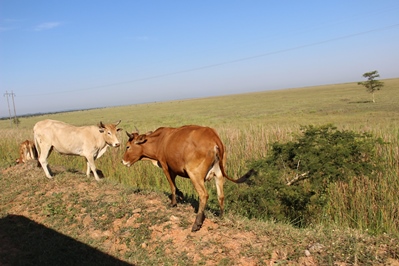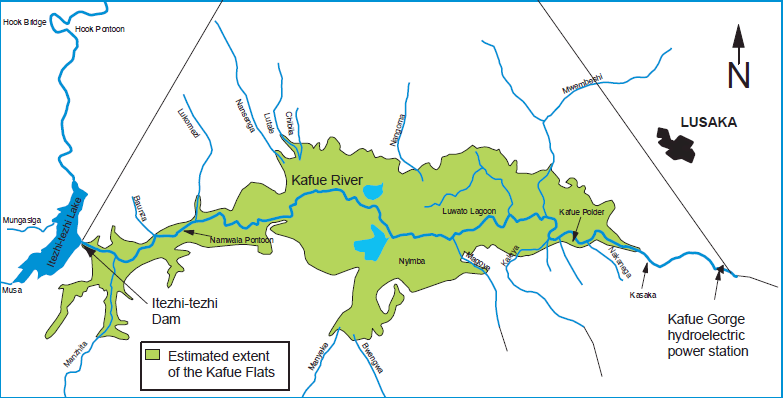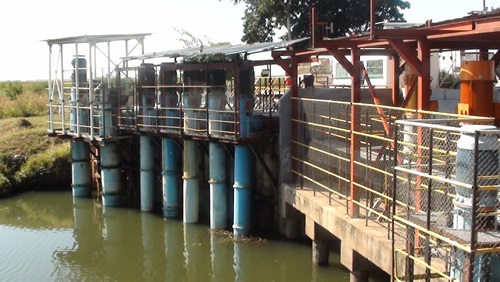
plantation. (Photo by Machaya Chomba)
The Kafue Water Security Dialogue took place on 29 April 2015 in Mazabuka, Zambia. It brought together stakeholders from a variety of sectors and backgrounds to participate in a series of presentations and discussions around water security challenges on the Kafue Flats, and how they could best be addressed.
What was evident was that many economic players operating on the Kafue Flats are already responding to these challenges and have launched a number of initiatives. The focus of the dialogue was thus on building stronger understanding of the water related risks and challenges that these economic players are facing and identifying innovative ways for dealing with the water security issues at hand. One of the unique aspects of the dialogue was private sector engagement that teased out multiple perspectives on water security.

As part of the dialogue, there was a field trip to a Zambia Sugar Company plantation. In many ways, the field trip epitomised the opportunities and challenges for business in responding to water security. The main processing plant for Zambia Sugar Company is located near the Kafue Flats, flanked by a stretch of land that is under traditional authority.
The proximity of the sugar cane plantation to traditional land has resulted in several spats between the local communities and the company in regards to cattle encroachment on the plantation. Stakeholder engagement by Zambia Sugar with locals is therefore very important, not only as a form of corporate social responsibility but also as a way of doing business that is deeply rooted in the operations of the company. During the field trip, it was clear that a healthy relationship with local communities is very critical to the work of the company.

Hydroelectric Power Production at the Kafue River. The Science and
Politics of Large Dams Research Seminar. Zurich)
The Kafue Flats are located in a portion of the Kafue River basin bounded by two water dams, 45km apart, owned and operated by the Zambia Electricity Supply Corporation (ZESCO) – referred to as the lower Kafue Basin. A number of companies including Zambia Sugar Company, ZamBeef, and Lusaka Water and Sewerage Company, as well as the local fisherfolk, abstract water from this portion of the river. ZESCO is the major user of water here, abstracting approximately 215 cubic meters per second (m³/s) for hydro-power generation. As such, interactions between these industries oscillate between water resources and hydro-power.

For instance, water pumps owned by companies such as Zambia Sugar and Lusaka Water and Sewerage Company depend on the power supplied by ZESCO to abstract water from the Kafue River. For ZESCO to increase its hydro-power generation to meet its demand, it would require abstracting more water from the river, thereby reducing available water for users downstream. The dilemma for ZESCO is how much water it would need to abstract in order to meet consumer demand without disadvantaging these other users. The issue becomes even more complicated as trans-boundary water law limits the amount of water that Zambia can dam on the Zambezi River and its tributaries. The Kafue River is a tributary of the Zambezi. During the day of the field trip, the water pump shown above was not operational due to load shedding by ZESCO. What is clear about this is the cyclical loop between water demand, allocation and hydro-power generation on the Kafue Flats.
Conventional theories on social behaviour might lead one to assume that companies would do as much as possible to avoid any costs involved in improving the state of the river basin. What was most apparent from the dialogue and the field trip was the willingness of private sector organisations to improve the state of the resource. This is because water resources are a major input in the productive process of many of these organisations, so improving the state of the water resource is equivalent to improving the productive process, and thereby reducing costs significantly. Representatives from the private sector were quick to recommend deliberate engagement and inclusion of compliance institutions such as the Zambia Environmental Management Agency (ZEMA) in future stakeholder dialogues. This seems to suggest a shift in how companies engaged with regulatory bodies such as ZEMA that previously were “outfoxed” and “out-maneuvered”, but are now deemed as partners in the production chain. The challenge for policy and conservation organisations is to create an incentive for these organisations to engage in collective action as a means of improving efficiency.
